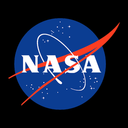
ไม่ได้ติดตั้ง WebCatalog ใช่หรือไม่? ดาวน์โหลด WebCatalog Desktop
แอปเดสก์ท็อปสำหรับ Mac, Windows (PC)
ใช้ Google Sky ในหน้าต่างเฉพาะที่ปราศจากสิ่งรบกวนด้วย WebCatalog Desktop สำหรับ macOS และ Windows เพิ่มประสิทธิภาพการทำงานของคุณด้วยการสลับแอปที่เร็วขึ้นและการทำงานหลายอย่างพร้อมกันที่ราบรื่น จัดการและสลับระหว่างหลายบัญชีได้ง่ายโดยไม่ต้องใช้หลายเบราว์เซอร์
เรียกใช้แอปในหน้าต่างที่ไร้สิ่งที่มาทำให้วอกแวก พร้อมการเสริมคุณภาพมากมาย
จัดการและสลับไปมาระหว่างหลายบัญชีและแอปอย่างง่ายดาย โดยไม่ต้องสลับเบราว์เซอร์
Google Sky เป็นแอพดาราศาสตร์แบบโต้ตอบที่ออกแบบมาเพื่อเพิ่มความเข้าใจในท้องฟ้ายามค่ำคืน มันใช้เซ็นเซอร์ GPS, เข็มทิศและเซ็นเซอร์ไจโรของอุปกรณ์ของคุณเพื่อจัดทำแผนที่แบบเรียลไทม์ของร่างกายท้องฟ้าที่มองเห็นได้จากตำแหน่งของคุณ ด้วยการชี้อุปกรณ์ของคุณไปสู่ท้องฟ้าแอพจะปรับแบบไดนามิกเพื่อแสดงดาวกลุ่มดาวและวัตถุท้องฟ้าอื่น ๆ ที่คุณกำลังดูอยู่
แอปรวมข้อมูลจากแหล่งต่าง ๆ รวมถึงภาพดาวเทียมของนาซ่าและกล้องโทรทรรศน์อวกาศฮับเบิลเพื่อนำเสนอมุมมองที่ครอบคลุมของท้องฟ้ายามค่ำคืน นอกจากนี้ยังใช้แผนที่ API เพื่อสร้างแผนที่หลายรุ่นเพื่อให้มั่นใจว่ามีการแสดงรายละเอียดและแม่นยำของสวรรค์ Google Sky ทำหน้าที่เป็นเครื่องมือที่มีค่าสำหรับทั้ง Stargazers และวัตถุประสงค์ทางการศึกษาช่วยให้ผู้ใช้เรียนรู้เกี่ยวกับดาวกลุ่มดาวและปรากฏการณ์ท้องฟ้าอื่น ๆ
คุณสมบัติของมันทำให้มันเป็นข้อมูลอ้างอิงที่ยอดเยี่ยมสำหรับผู้ที่ชื่นชอบดาราศาสตร์ให้ข้อมูลเชิงลึกเกี่ยวกับการจัดวางของ Night Sky และช่วยให้ผู้ใช้ระบุร่างสวรรค์แบบเรียลไทม์ ไม่ว่าจะใช้เพื่อการสำรวจส่วนบุคคลหรือวัตถุประสงค์ทางการศึกษา Google Sky นำเสนอวิธีที่ใช้งานได้จริงและมีส่วนร่วมในการสำรวจจักรวาลจากอุปกรณ์มือถือของคุณ
คำอธิบายนี้สร้างโดย AI (ปัญญาประดิษฐ์) AI อาจทำข้อผิดพลาดได้ โปรดตรวจสอบข้อมูลสำคัญ
เว็บไซต์: google.com
ข้อความปฏิเสธความรับผิดชอบ: WebCatalog ไม่ได้ประกอบกิจการร่วม ไม่ได้รับอนุญาต ไม่ได้รับการรับรองโดยหรือเชื่อมโยงกับ Google Sky อย่างเป็นทางการไม่ว่าในทางหนึ่งทางใด ชื่อผลิตภัณฑ์ โลโก้ และแบรนด์ทั้งหมด เป็นทรัพย์สินของเจ้าของที่เกี่ยวข้อง

Google Maps
google.com

Google Earth
google.com

Google Travel
google.com

Google Moon
google.com

Google Arts & Culture
artsandculture.google.com

Google Mars
google.com

SkyVector
skyvector.com

Think with Google
thinkwithgoogle.com

Google Street View Studio
google.com

Google Earth Engine
earthengine.google.com

Skyglass
skyglass.com

NASA+
plus.nasa.gov

Google Learning
learning.google

Nimbo Earth Online
nimbo.earth

Sky Ticket
sky.de

MapCrunch
mapcrunch.com

SkyFi
skyfi.com

Learning Light
artsandculture.google.com

SkyNav Academy
skynavintl.com

ASTROSafe
astrosafe.co

Skyepack
skyepack.com

Education Galaxy
educationgalaxy.com

Art Coloring Book — NASA
artsandculture.google.com

SkyNeu
skyneu.com
โซลูชั่น
© 2025 WebCatalog, Inc.